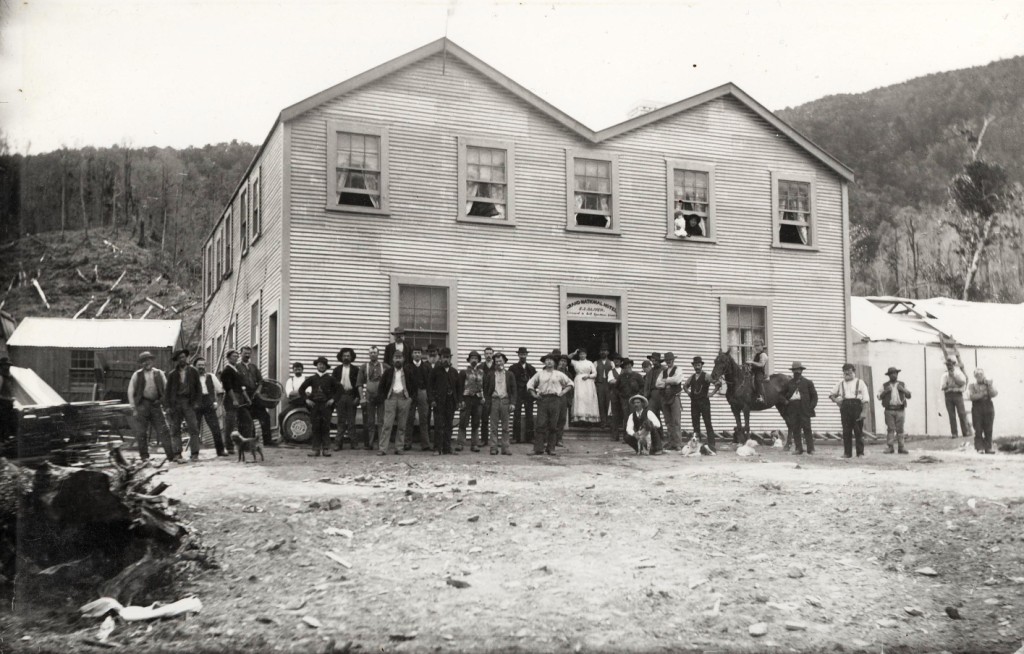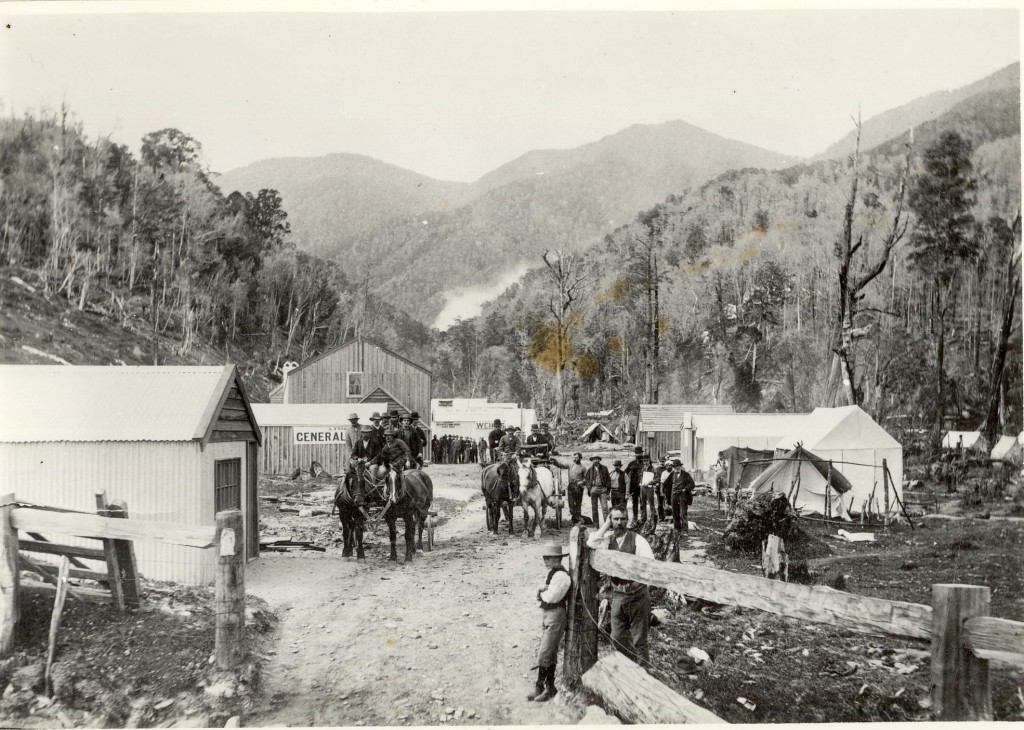Cullensville
The abandoned town of Cullensville, which sits at the head of the Mahakipawa Valley about two miles inland from the eastern arm of the head of the Te Hoiere/Pelorus Sound, was once a thriving goldmining centre.
The abandoned town of Cullensville, which sits at the head of the Mahakipawa Valley about two miles inland from the eastern arm of the head of the Te Hoiere/Pelorus Sound, was once a thriving goldmining centre.
On 23 May 1888 prospector Charlie Jackson and others discovered gold in Cullen’s Gully (Cullen Creek). There had been a race to report it as a £500 bonus awaited. The area was officially declared a gold field in late June, by which time there were hundreds of men on site.
William Cullen was the landowner in the Lower Valley, and had been farming in the area from 1857. The township which sprang up, almost overnight, was named Cullensville after him. Despite the first flood washing the miners out the same month, the township and mine workings grew and, by August 1888, 600 men were digging in the valley.
The first business established in Allen Street was a bakery, and soon there were five general stores, three bakeries, two blacksmiths, two butcher's shops, three bootmakers, two billiard rooms, two eating houses, the National Bank, a Post Office (which operated 1888-1911) and Resident Constable. The first hotel had people queueing for both drinks and meals. A Chinese market gardener supplied vegetables from Kaituna and a new wharf was built at The Grove, with revenue from the gold tax, and steamers delivered passengers from Picton.
At its peak, close to one thousand men were on the diggings, with gold of high quality and in good supply. Workings like Golden Hope, Eureka, Boys Own, Venture, Hiberian and King Solomon were all good, but the most outstanding was Wairarapa which yielded a reputed 10,000 pounds in two years. A 26oz nugget was found by Scaife and party in Gorries Claim.
Most of the surface gold was quickly worked out and by the end of 1896 the township of Cullensville was abandoned. Gradually buildings were demolished for use elsewhere, fell to pieces, or burnt down - the big Grand Hotel burned down early in 1897. However as late as the 1930s, when another Depression struck, miners were still active in the valley.
When Cullensville was thriving, a school was built in the township, which had about 40 pupils (about the size of Ward School today). The school eventually closed in 1907, when the Grove school building was moved to Linkwater, so serving the whole district. A new school was eventually built in Linkwater in 1932, after the old one ‘conveniently’ burnt down.
Leo Gilchrist’s parents ran the hotel at Linkwater. He remembers in his childhood: “The mines used to be working three 8-hour shifts. They’d start at midnight, change shifts again at 8 o’clock in the morning, and again at 4 in the afternoon. When the miners come off the shift, whether it was day or night, that was the day’s work, and they wanted a beer. So consequently the pub used to run 24 hours a day!” He also recalled Gorton Cuddon (founder of Cuddon Engineering) staying at the hotel while he serviced the mine machinery.
This story was adapted from one written by Loreen Brehaut for the Picton Seaport News, 2014
Updated August 2021
Story by: Loreen Brehaut
Further Sources
Books
- Brayshaw, N.H. (1964) Canvas and gold: a history of the Wakamarina goldfields and lower Pelorus Valley. Blenheim, N.Z.: Brayshaw.
http://www.worldcat.org/oclc/45550026 - Johnston, M. (1992) Gold in a tin dish: the search for gold in Marlborough and Eastern Nelson. v.1. The history of the Wakamarina goldfield. Nelson, N.Z.: Nikau Press.
http://www.worldcat.org/oclc/32973337 - McIntosh, A.D. (ed.) Marlborough, a provincial history. Blenheim, N.Z.: Marlborough Provincial Historical Committee.
http://www.worldcat.org/oclc/4654822 - Nolan, T. (1976) Historic gold trails of Nelson and Marlborough. Wellington, N.Z.: A.H. and A.W. Reed.
http://www.worldcat.org/oclc/7248786 - Ritchie, W. H. (1998) Tales of the Wakamarina. Walton-on-Thames, England : Ritchie Pub.
http://www.worldcat.org/oclc/156824376
Newspapers
- Cullensville Notes (1892, May 2) Marlborough Express, p.4
http://paperspast.natlib.govt.nz/cgi-bin/paperspast?a=d&d=MEX18920502.2.39 - A trip to Cullensville (1894, November 29) Marlborough Express, p.3
http://paperspast.natlib.govt.nz/cgi-bin/paperspast?a=d&d=MEX18941129.2.32
Websites
- Cullensville. In Cyclopedia of New Zealand: Nelson and Marlborough (1906). Retrieved from NZETC:
http://www.nzetc.org/tm/scholarly/tei-Cyc05Cycl-t1-d2-body1-d2-d28-d13.html - Department of Conservation. Waikakaho/Cullen Creek Walkway. Retrieved 9 March 2015:
http://www.doc.govt.nz/parks-and-recreation/tracks-and-walks/marlborough/sounds/waikakaho-cullen-creek-walkway/

